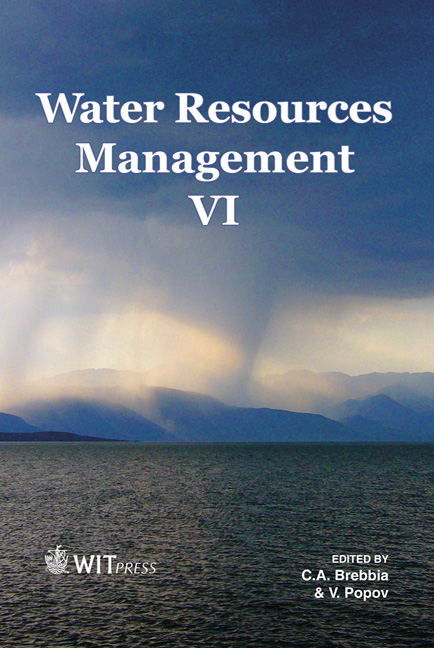Flood Risk Assessment In Tabasco, Mexico
Price
Free (open access)
Transaction
Volume
145
Pages
9
Page Range
631 - 639
Published
2011
Size
503 kb
Paper DOI
10.2495/WRM110561
Copyright
WIT Press
Author(s)
L. Gama1, M. A. Ortiz-Pérez2, E. Moguel-Ordoñez, R. Collado-Torres, H. Diaz-López, C. Villanueva-García & M. E. Macías-Valadez
Abstract
Floods constitute the worst type of disaster in the South of Mexico, where Tabasco is located. The resulting damages have had the largest economic, social, and environmental consequences. Recently, floods have increased spatially and in magnitude in a drastic way which has become a risk for a great number of the population. This phenomenon would increase due to global warming. Although it is impossible to eliminate floods in the area, the identification of vulnerabilities and the generations of capabilities will protect the population as well as the economic and social infrastructure minimizing their effects. Rainfalls higher than 400 mm throughout 24 hours are nowadays common in some areas of the State. Tabasco has undergone an important land cover change, mainly because of two activities: oil extraction and cattle ranch affecting natural landscapes, especially wetlands. Satellite images, aerial photos and historical data were reviewed to evaluate changes of the hydrological system related to floods. Due to the increase in extraordinary precipitation events, a risk analysis was carried out to assess the loss of environmental services and to configure vulnerability and risk maps. Results show that some of the infrastructure built to protect urban areas against floods has not been supported with studies related to the natural components of the area, affecting the hydrodynamic of the basin and increasing drastically the risk to the population. Water management, restoration policies and infrastructure alternatives are proposed as adaptation strategies to be able to minimize population risk of floods in the future. Keywords: climate change, hydrology, watersheds, disaster, vulnerability.
Keywords
climate change, hydrology, watersheds, disaster, vulnerability





